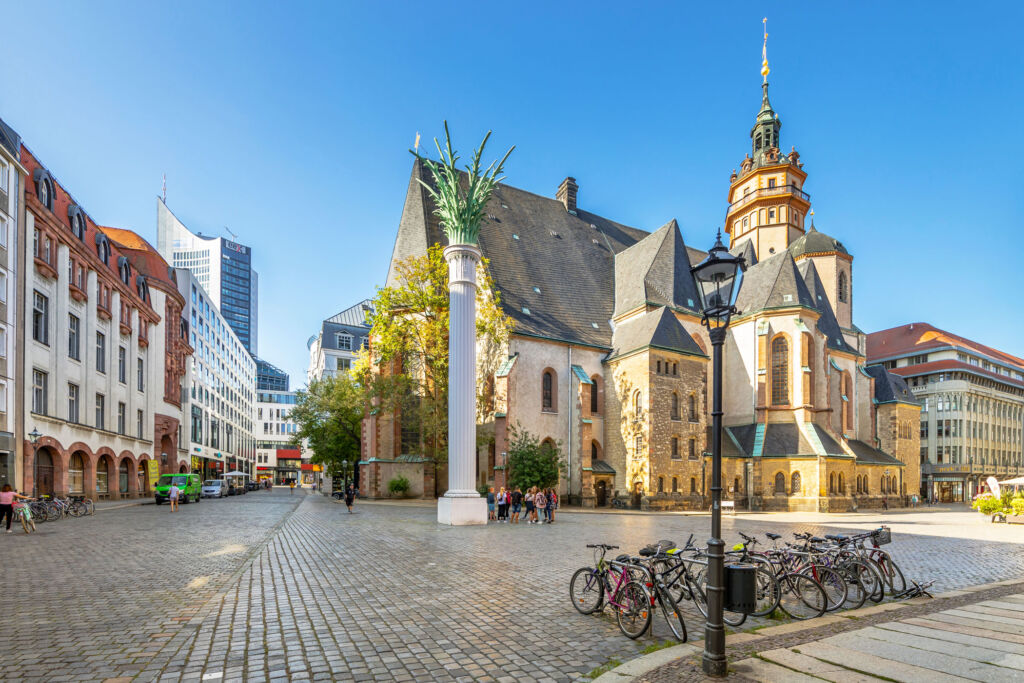
Right now, the centre of Leipzig is sparkling with glittery lights, fabulously decorated trees and ribboned wreaths for its annual Christmas market. With origins stretching as far back as 1458, the Leipzig Christmas Market (Leipziger Weihnachtsmarkt) is considered one of the oldest Christmas markets in Germany. It’s also one of the largest, with over 300 stalls for visitors to peruse.
But way before these stalls came along, Leipzig, one of the major cities in the eastern part of Germany, was a city of trade and commerce. Leipzig’s location, 185 kilometres southwest of Berlin in western Saxony, in the middle of a plain where two major trade routes of central Europe met, helped bring major development to this city.
It prompted the creation of a great network of roads converging on the town, drawing merchants and traders in their hoards.
Traders took full advantage of this and held markets at Easter and Michaelmas (a Christian festival observed in many Western Christian liturgical calendars), allowing the town to prosper. Leipzig prospered further when it was given economic privileges and forbade towns within 15 kilometres from holding their own markets.
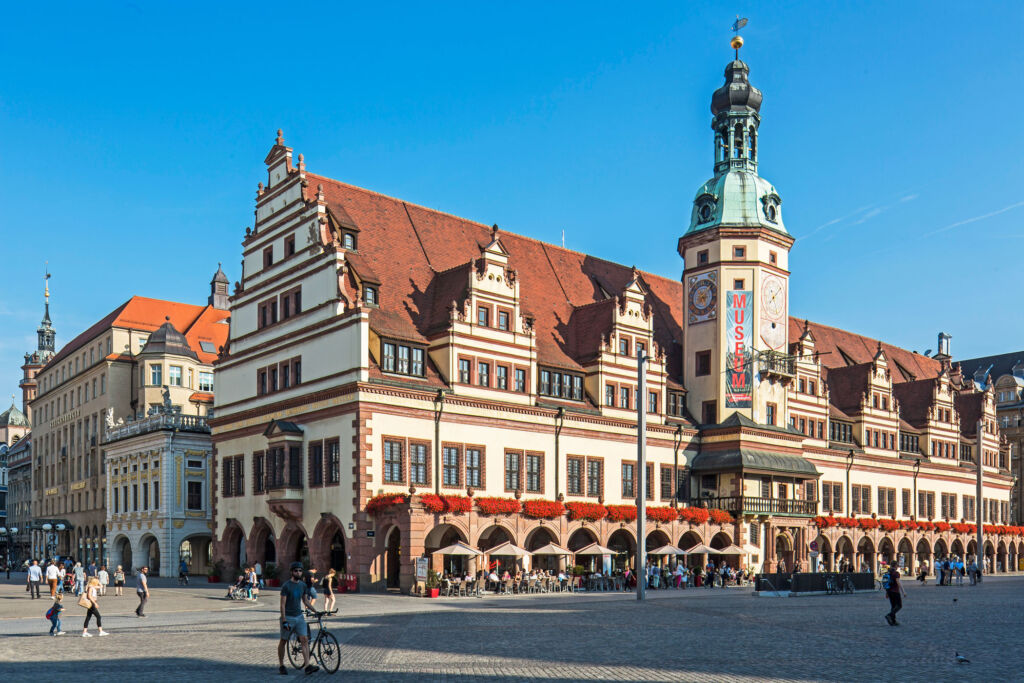
For a great introduction to the city’s architectural heritage, I recommend heading to the Old Town Hall (Altes Rathaus). The Museum of City History housed inside helps make sense of the development of Leipzig from medieval times to the present day.
A prime example of Renaissance architecture in the city centre, the two-storey building built in 1556 has an elegant ballroom that hosts events, exhibitions, and concerts. Today, the street level is brimming with bars, cafes, restaurants and boutiques.
Magnet for famous composers
Leipzig’s economic growth paved the way for its cultural scene, attracting artists and musicians alike. It was here that composer Johann Sebastian Bach decided to settle for 27 years.
Bach, perhaps one of Leipzig’s most famous residents, was instrumental in making the city the music hub it is known for today alongside composers Clara and Robert Schumann, Felix Mendelssohn and Leipzig-born Richard Wagner.
His life and work can be appreciated at the Bach Museum. Visitors can expect to find a range of items belonging to the musician, including old instruments. But it’s the Treasure Room that attracts the crowds, where original hand-written manuscripts by Bach can be viewed in glass cases.
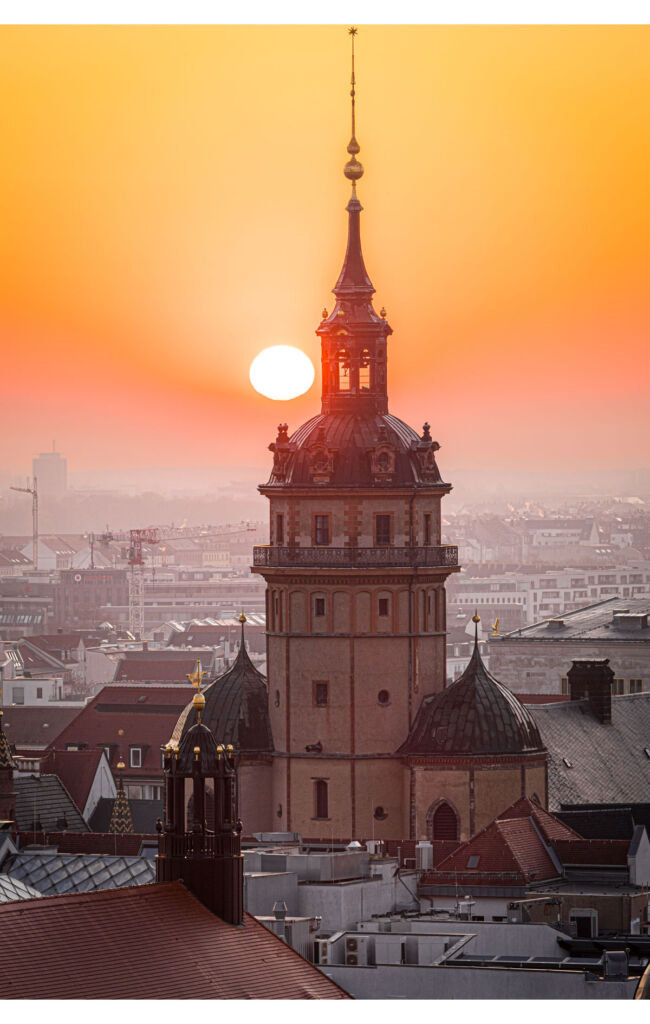 To see more connections of Bach in Leipzig, head to Nikolaikirche (St Nicholas Church), where he was a music director between 1723 and 1750. He also presided over the choir at Thomaskirche, a beautiful 13th-century Gothic church, where his remains were buried in 1949 beneath a bronze plate in front of the altar.
To see more connections of Bach in Leipzig, head to Nikolaikirche (St Nicholas Church), where he was a music director between 1723 and 1750. He also presided over the choir at Thomaskirche, a beautiful 13th-century Gothic church, where his remains were buried in 1949 beneath a bronze plate in front of the altar.
Several of Bach’s works were premiered at Nikolaikirche. The church, which has undergone several styles from Romanesque to Gothic and Baroque to neoclassical over the years since its construction in 1165, is well worth a visit.
City of Heroes
In recent years, the church played an instrumental part in the demise of the former powerhouse of the German Democratic Republic (GDR). The bold first Monday demonstrations against communist rule kicked off here in 1989.
The power of the people led to Leipzig earning the accolade of ‘City of Heroes’ or the ‘Stadt der Helden’ because of this. The weekly peaceful mass protests against the East German government played a huge part in the reunification of the country.
Two museums – the Zeitgeschichtliches Forum (Forum Of Contemporary History) and the Memorial Museum in the Round Corner – hold a plethora of information about the downfall of the regime and the collapse of the Berlin Wall. The latter is the site of the former Stasi headquarters.
Visitors to these can see over 3,000 chilling exhibits, including surveillance devices and propaganda leaflets detailing what life was like under the ruthless GDR’s secret police service. It’s an eerie experience.
The historical main square
Augustusplatz, Leipzig’s main square, is home to several festivals and markets throughout the year, but look around at the perimeter, and you’ll find plenty of buildings of historical note.
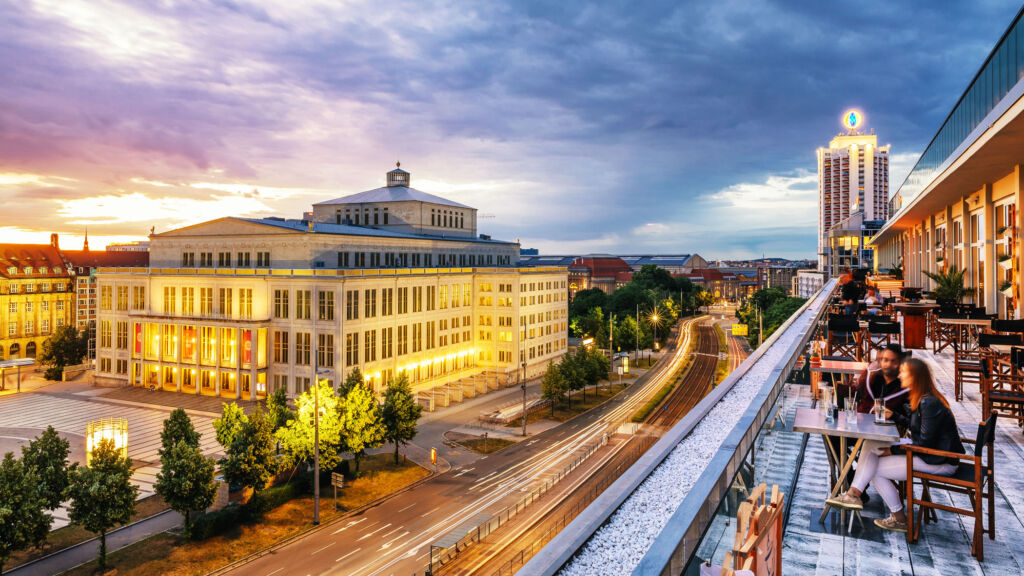
Here you will find Oper Leipzig (Opera House). The third oldest civilian music theatre in Europe and takes a prominent position on the square. The 17th-century building was in an air raid in 1943 during the Second World War.
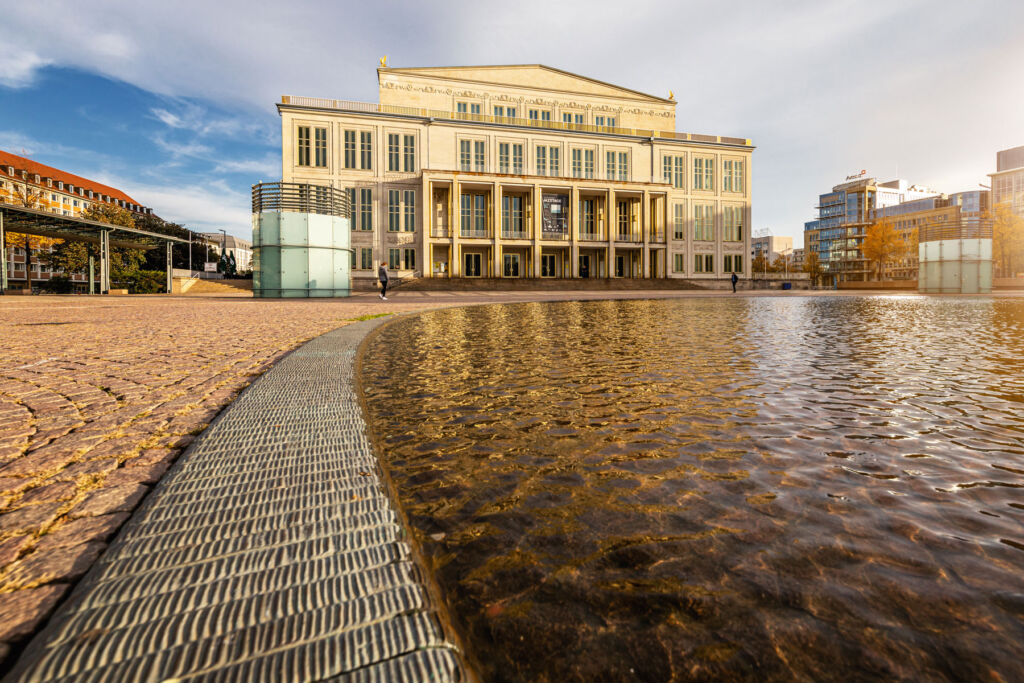
It’s since been rebuilt, and opera fans can book a tour guide to get a behind-the-scenes look at the theatre. It was fascinating to see the dressing rooms and all the costumes lining the racks to be worn by performers in the forthcoming performances.
Across the Opera House sits the 2000-seat Gewandhaus (concert hall). Tourists will be forgiven for looking at the modern building, possibly confused and questioning how this could be the centuries-old home to the Gewandhausorchester. They’d be right to.
It’s not the house Felix Mendelssohn Bartholdy, Arthur Nikisch and Wilhelm Furtwängler conducted in. It’s the third purpose-built house to bear the same name. The oldest civil orchestra in the world, its hall attracted an audience of up to 500, witnessing Mozart’s only appearance in Leipzig.
To get expansive views of the city, head to the top of the Panorama Tower (City-Hochhaus) on the 31st floor. Shaped in the form of an open book, Leipzig’s tallest building stands at 142,5 meters high. It was constructed in 1972 as a sectional building of the university. (Leipzig University, founded in 1409, is one of the oldest in Europe ).
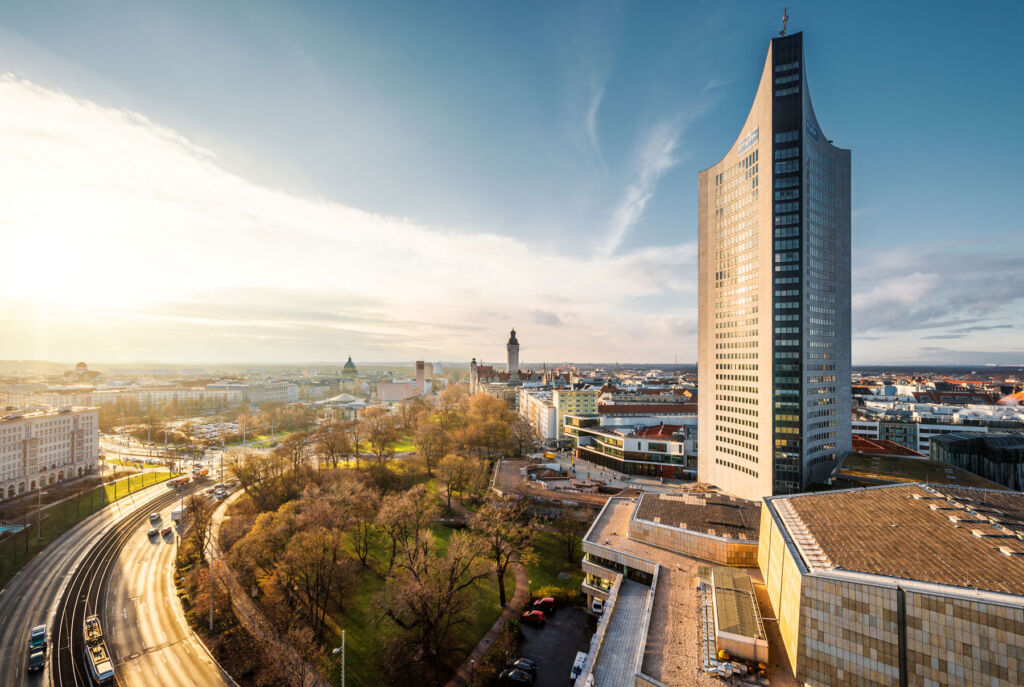
The best way to enjoy the beautiful panorama of Leipzig is on the observation platform on the 31st floor. The entrance fee for the viewing platform is € 5,00 per person, but you can still see amazing views (especially the sunset) from the restaurant underneath Panorama Tower’ Plate of Art’, which is the highest restaurant in Central Germany.
Thriving art scene
Leipzig is also an art lovers paradise, and if you’re one of them, be sure to head to Grassi Museen – a university-run collection of museums. It’s home to the Museum für Musikinstrumente (Museum of Musical Instruments), Museum für Völkerkunde (Museum of Ethnography) and Museum für Angewandte Kunst (Museum of Applied Arts).
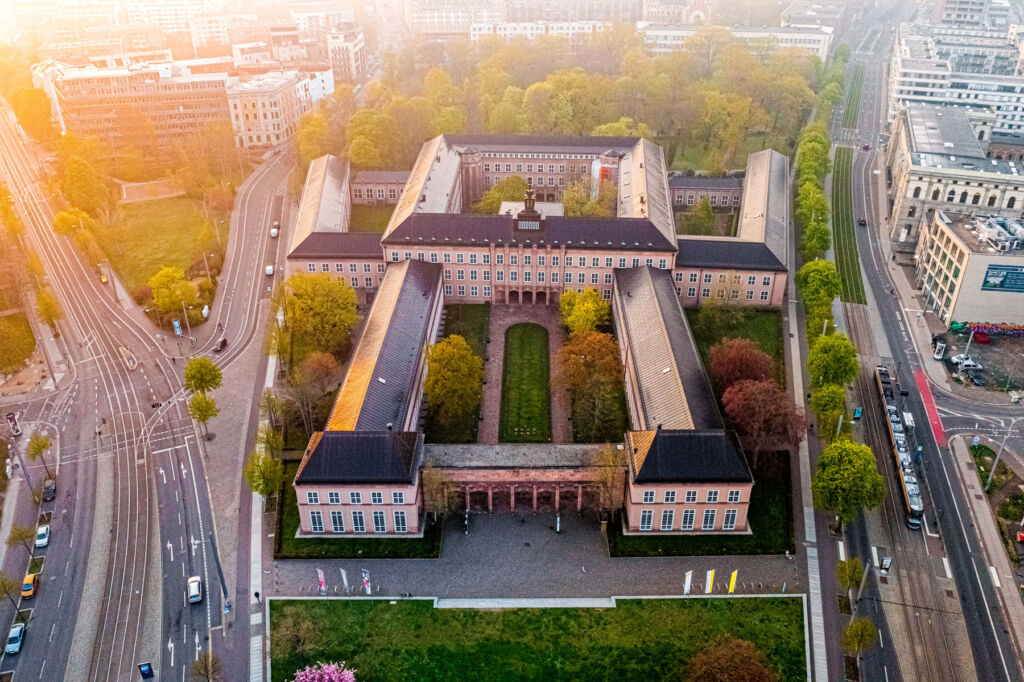
The Grassi Museum of Applied Arts first opened in 1874 and is Germany’s second oldest Museum belonging to this genre. The Museum celebrates its 150th anniversary in 2024. Director Dr Olaf Thormann gave me an exclusive tour of it while pointing out the various collections he and his team have amassed over the years.
Dr Thormann, who has worked at the Museum for three decades, has himself been instrumental in sourcing some of the promised pieces by donors before the Second World War.
From the onset, the Museum’s collection has extended through all areas of material and all periods of European and Asian applied art.
Today, the collection has widened to art objects from other continents. Each room housing the collections is unique, and the 23,000 unique pieces comprise textiles, fashion, metalwork, ceramics, sculptures, medals, plaques and furniture.
The Hype of Leipzig
While cherishing its cultured past, Leipzig is making waves as the country’s fastest-growing city. 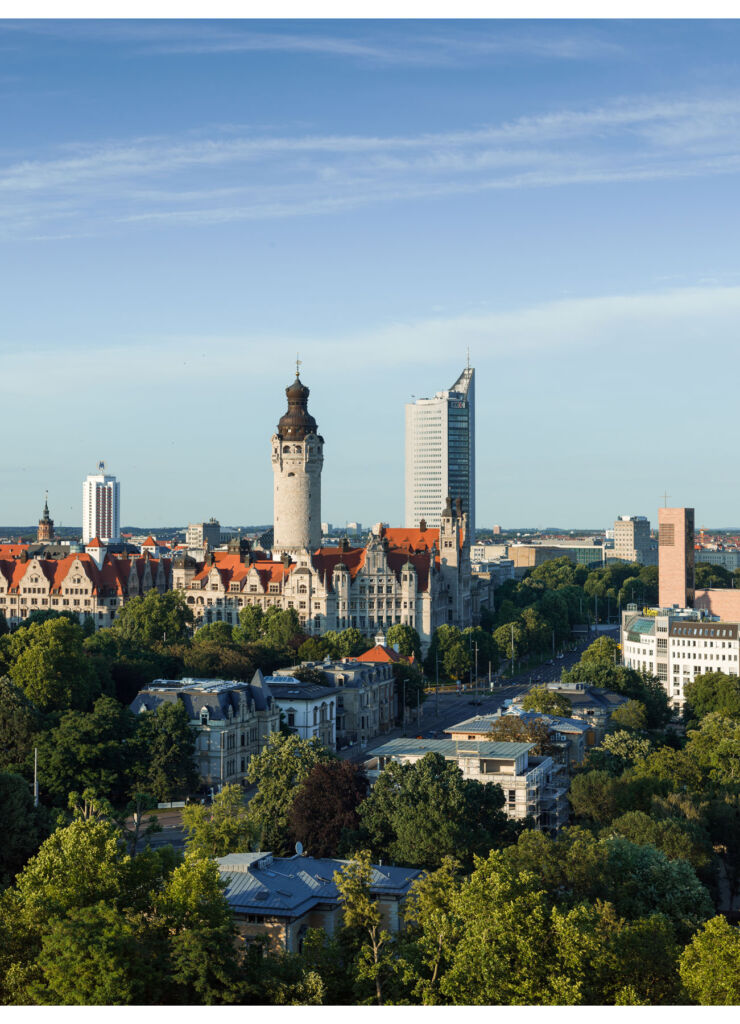 Following the German reunification, historic landmarks were restored, including the Old Town Hall, the Old Commercial Exchange, and the old residential and market squares.
Following the German reunification, historic landmarks were restored, including the Old Town Hall, the Old Commercial Exchange, and the old residential and market squares.
In 2000, an urban renewal plan saved Leipzig from decline, and the city has been elevating its image into the ‘next place’ to be seen since. It’s doing such a grand job as it was recently voted the most liveable city in Germany. It’s no wonder locals have nicknamed it ‘Hypezig‘.
Today, 33 years on since the collapse of the Berlin wall, Leipzig is once again thriving and attracting new industries as it did with the trade and merchants all those centuries ago. Porche, BMW and DHL all have bases here.
A tour of the Porche Experience Centre is a must if you like adventure. From driving around the FIA-certified race track to the behind-the-scenes guided factory tour, it’s a fun day out.
It’s super easy to get around this city with the cost-effective Leipzig Card. But if you’re looking to spend most of the time in and around the city centre, you’re in good company.
Alongside the cultural aspects, shopping options are plentiful and vibrant pub districts are conveniently located in the centre. However, Leipzig hasn’t forgotten its darker days but rather has embraced it as it heads steadfast to its original glory as a city of style.
Leipzig – Where and How?
For more information on Leipzig and advice on planning a trip, visit www.leipzig.travel/en/.
![]()


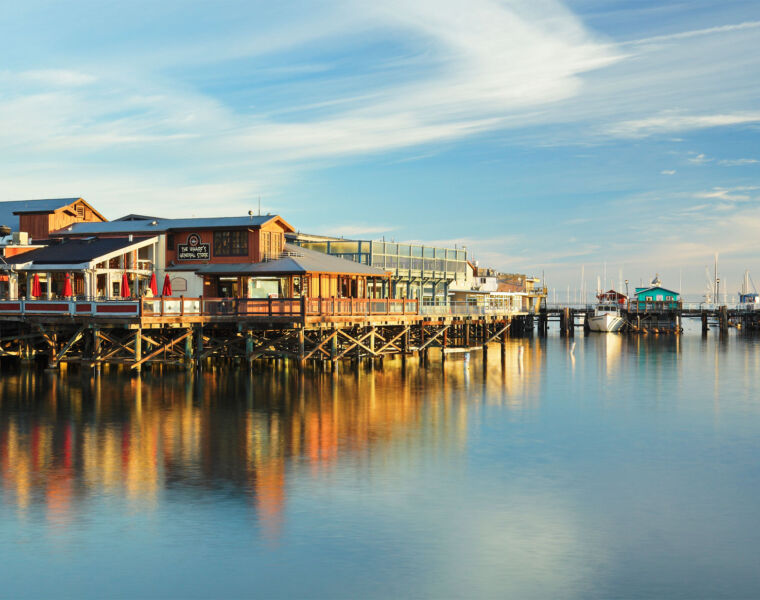

You must be logged in to post a comment.